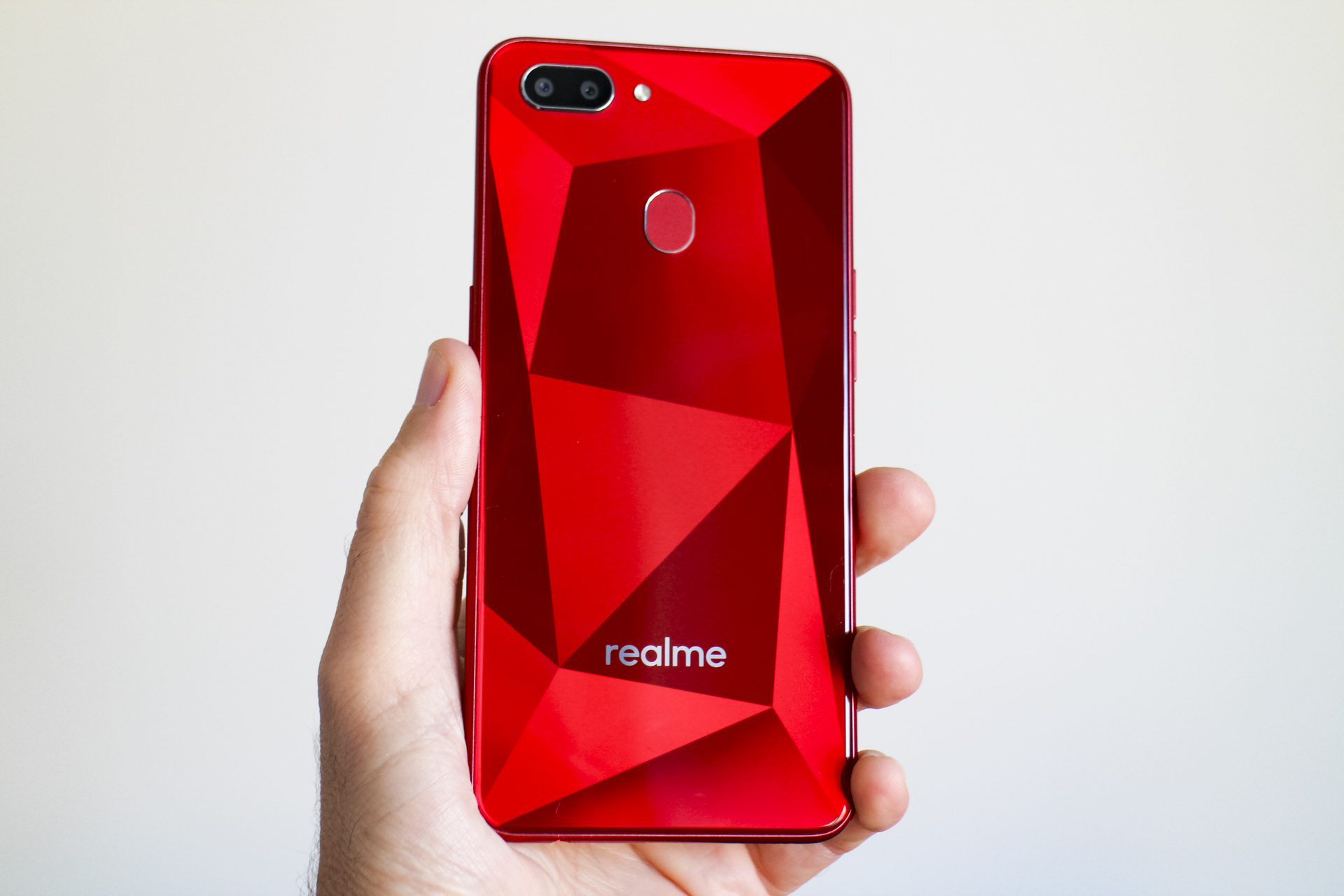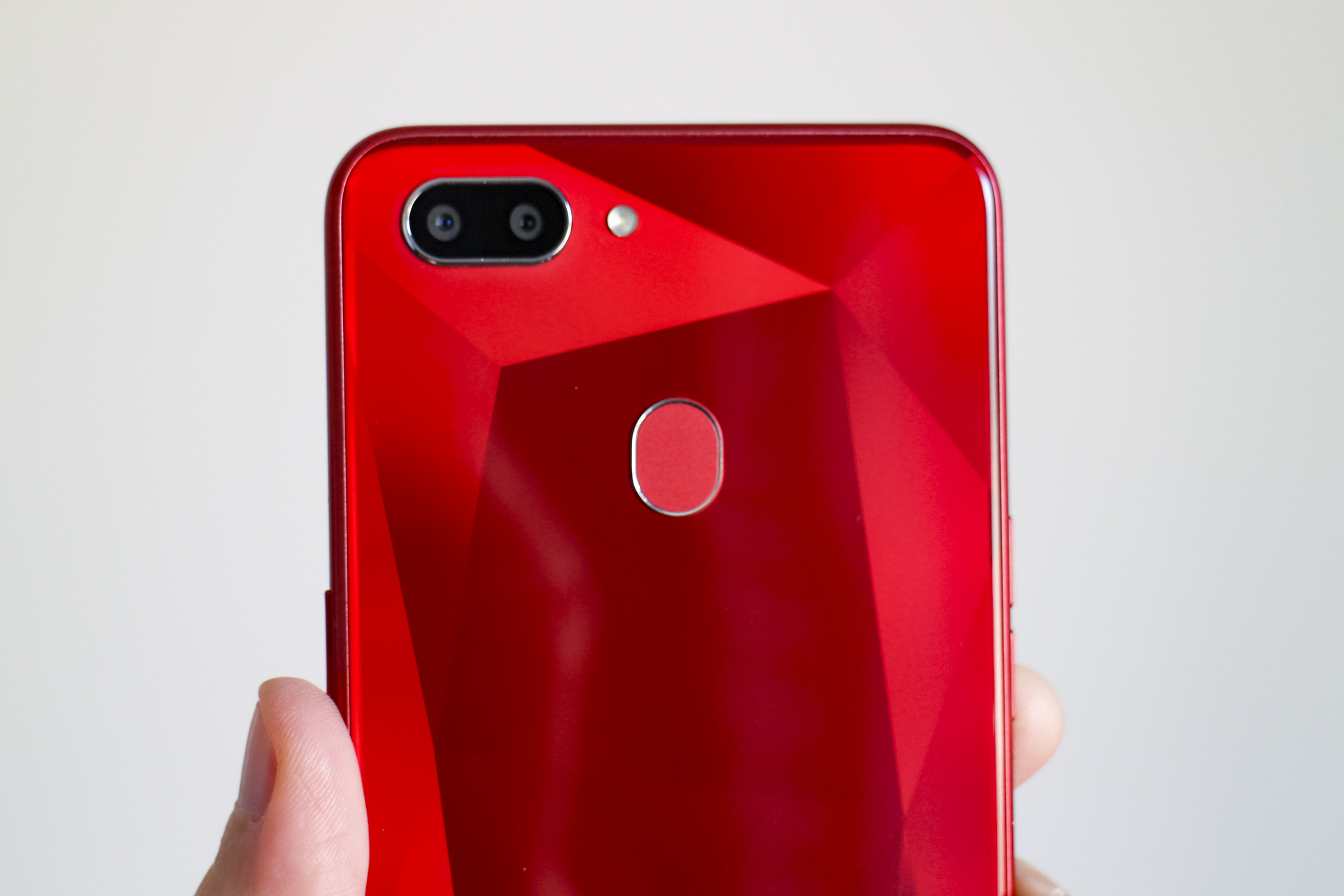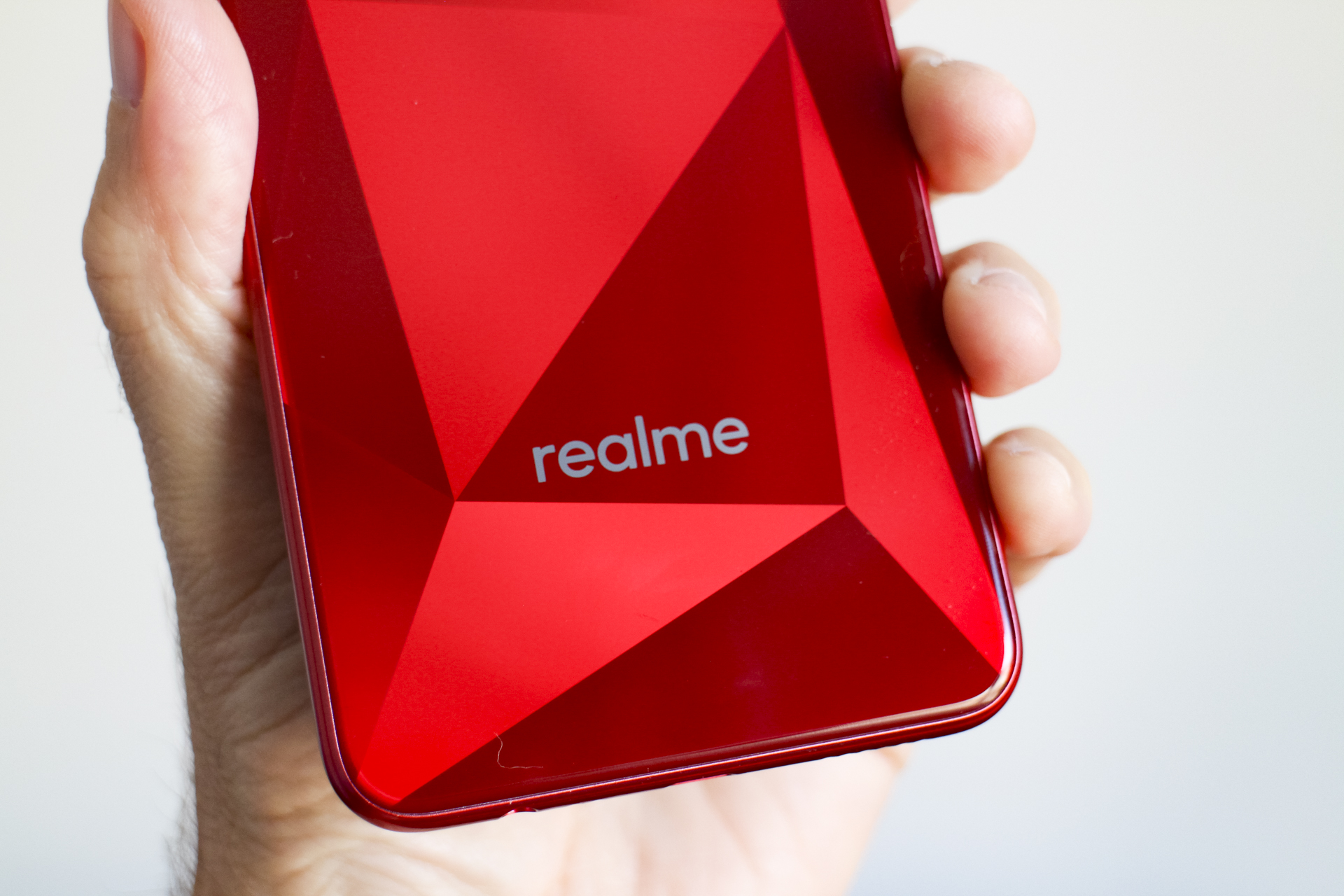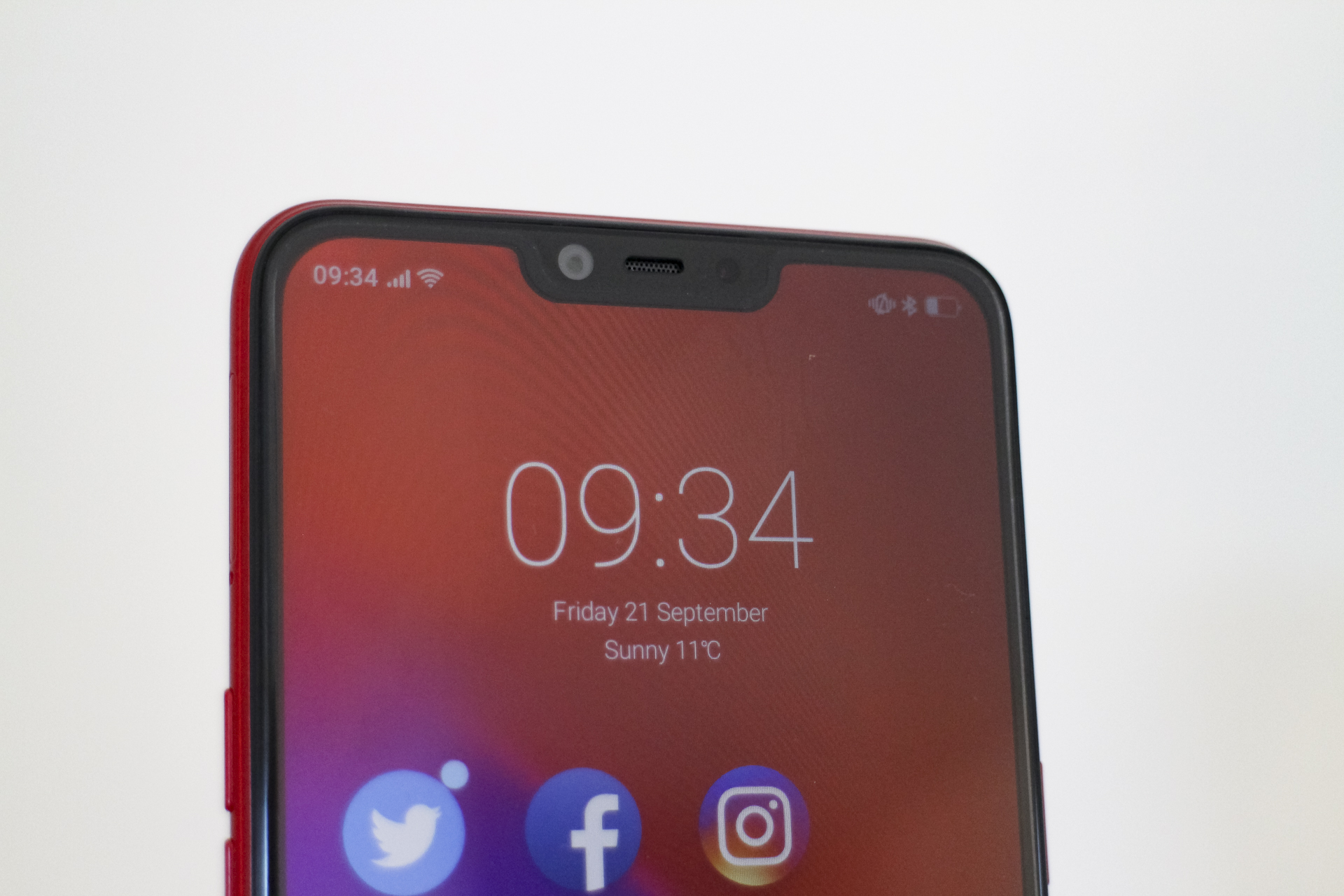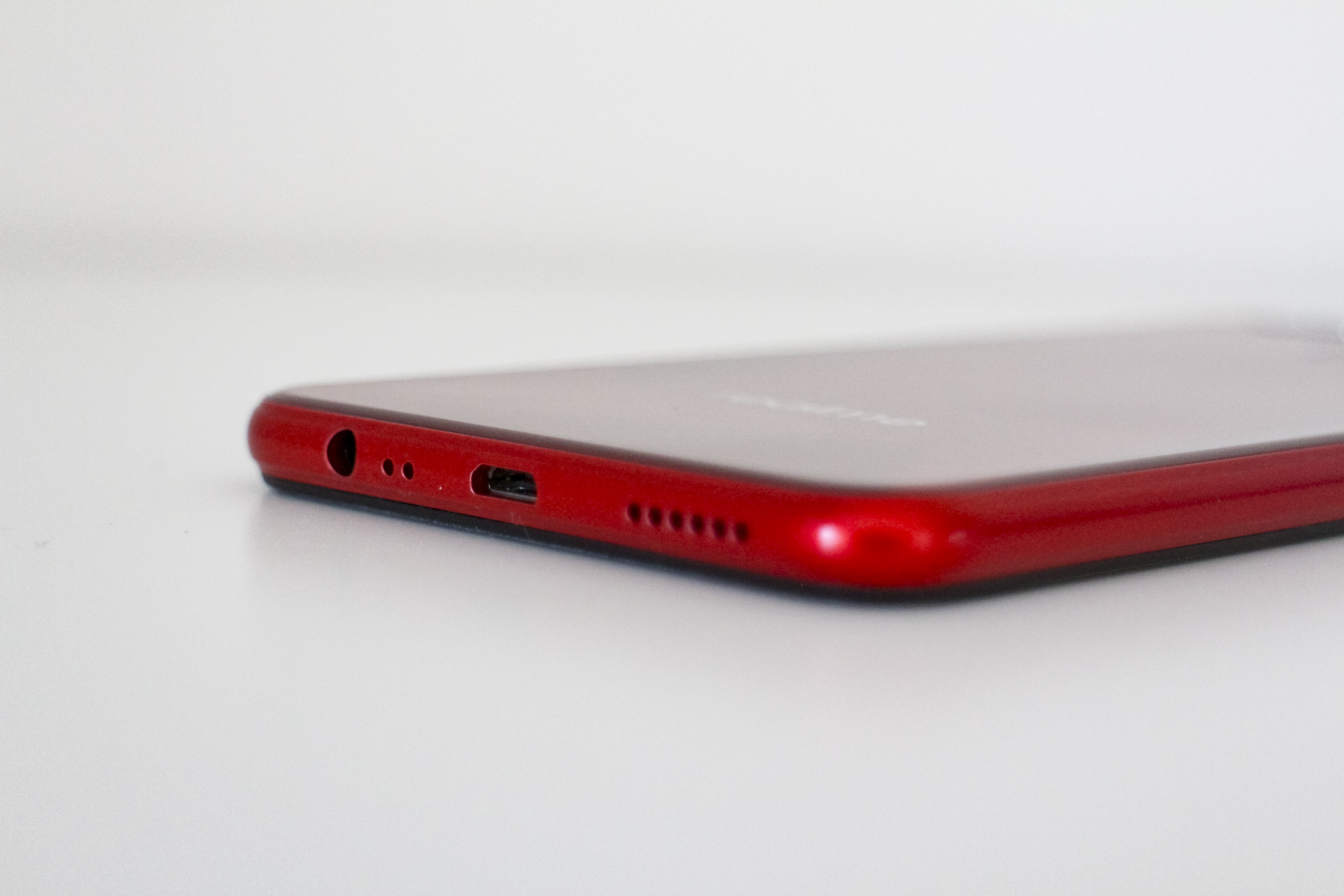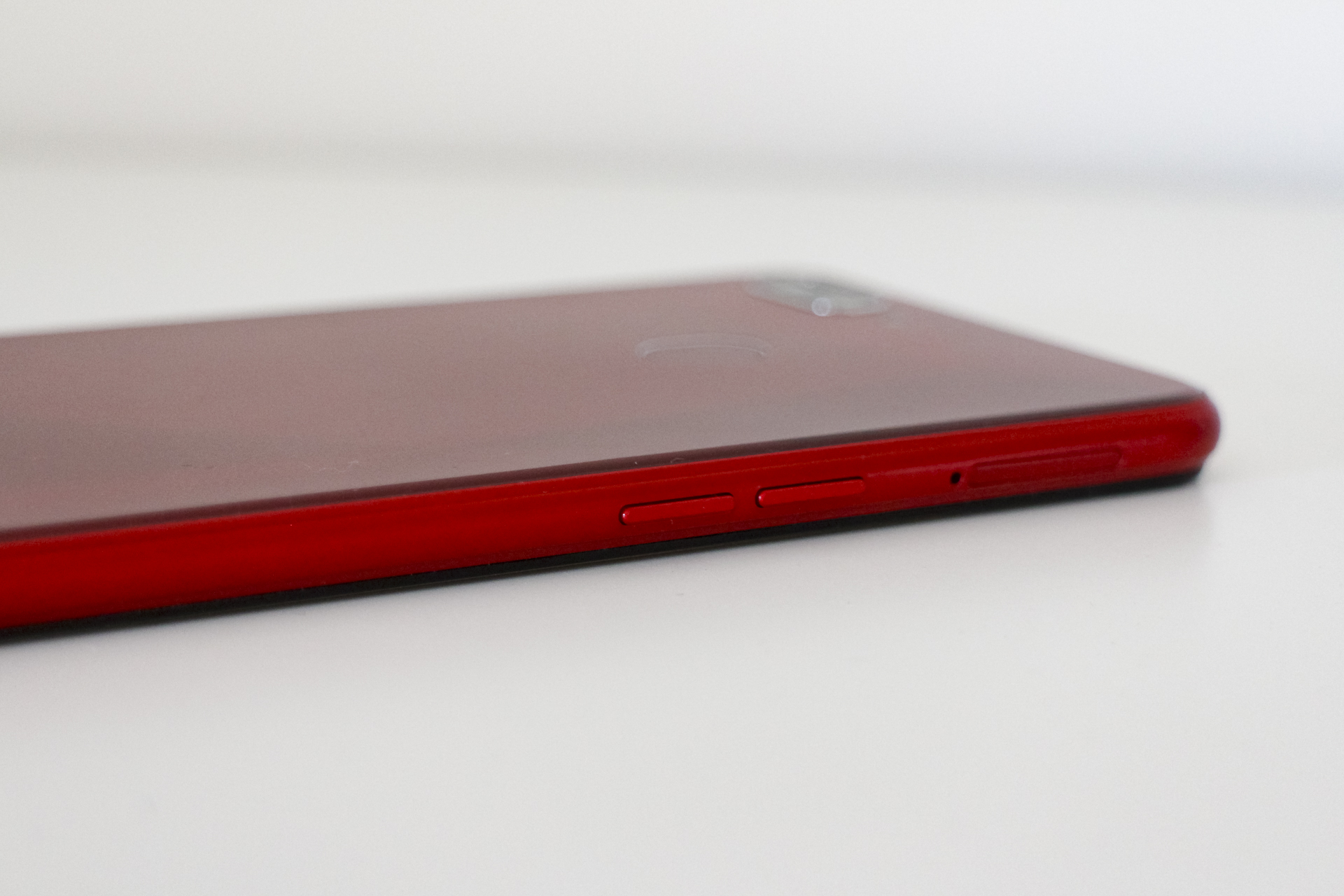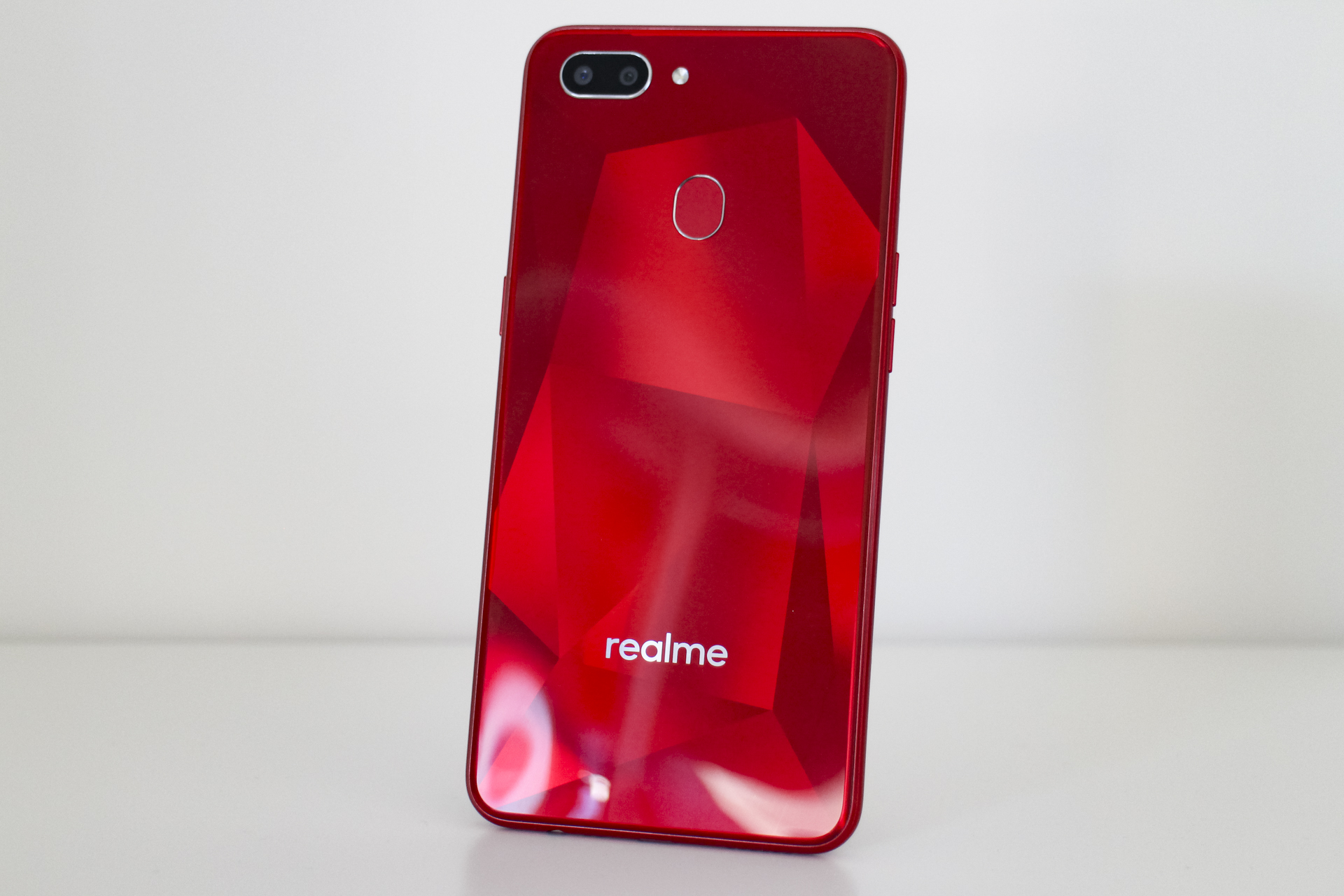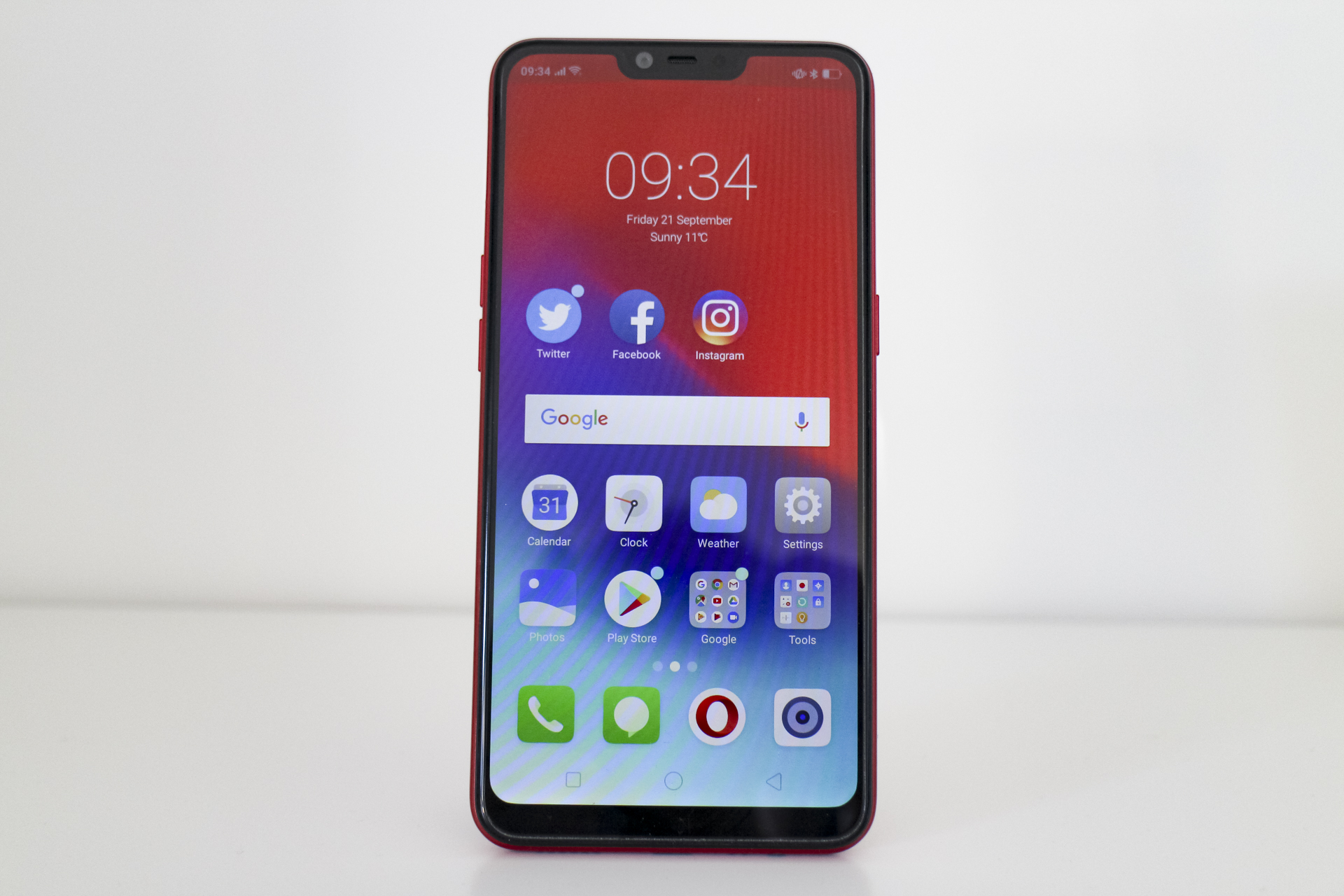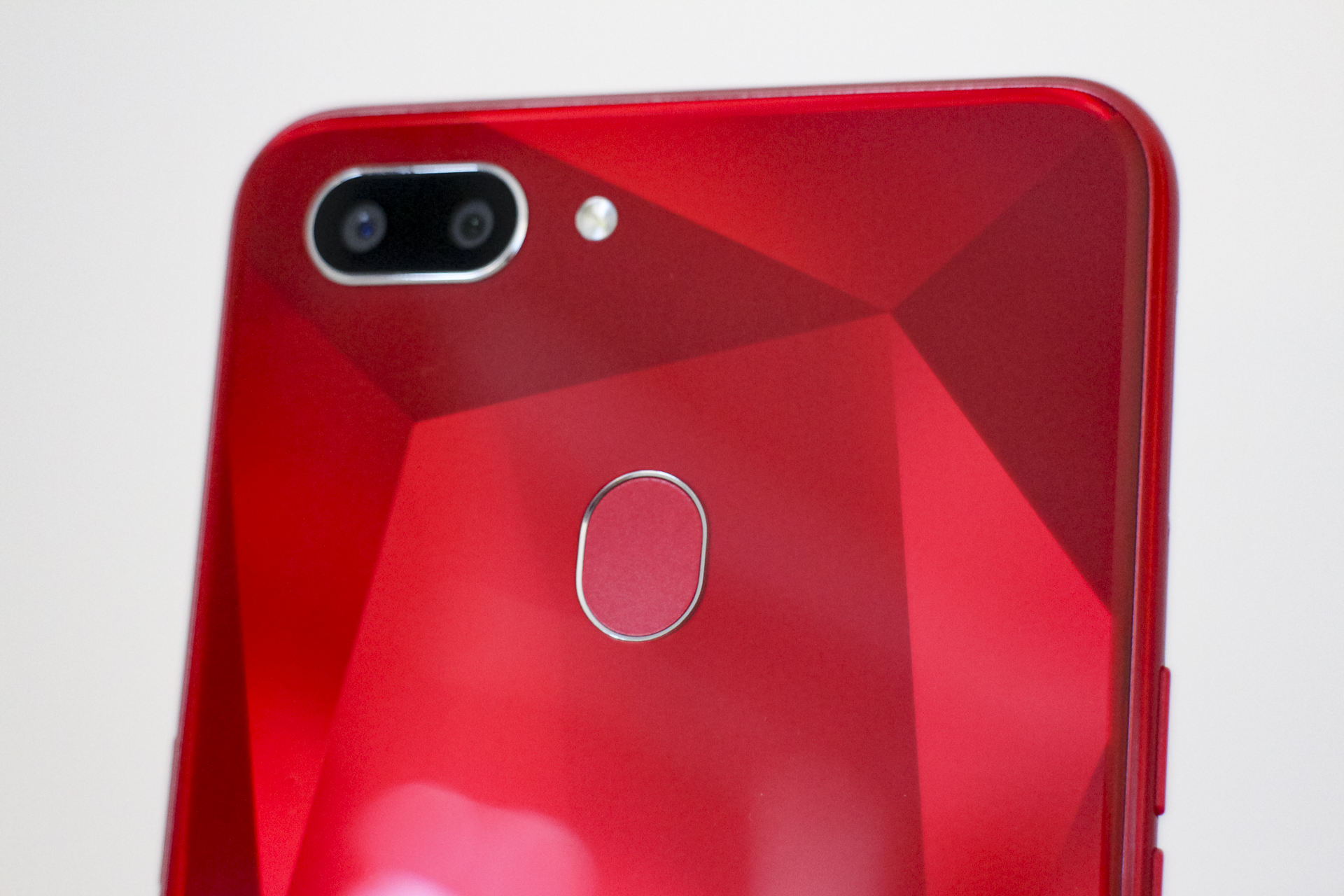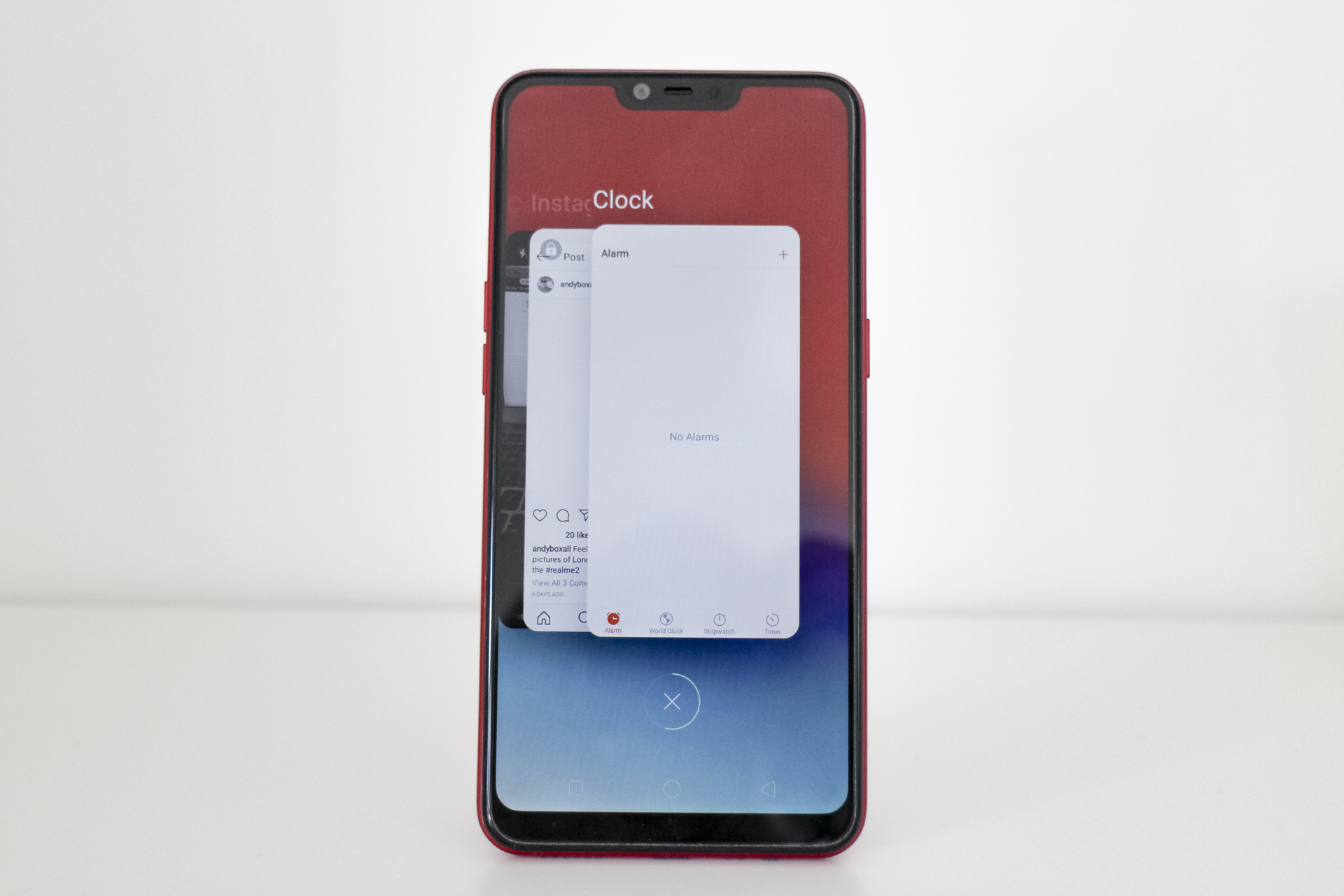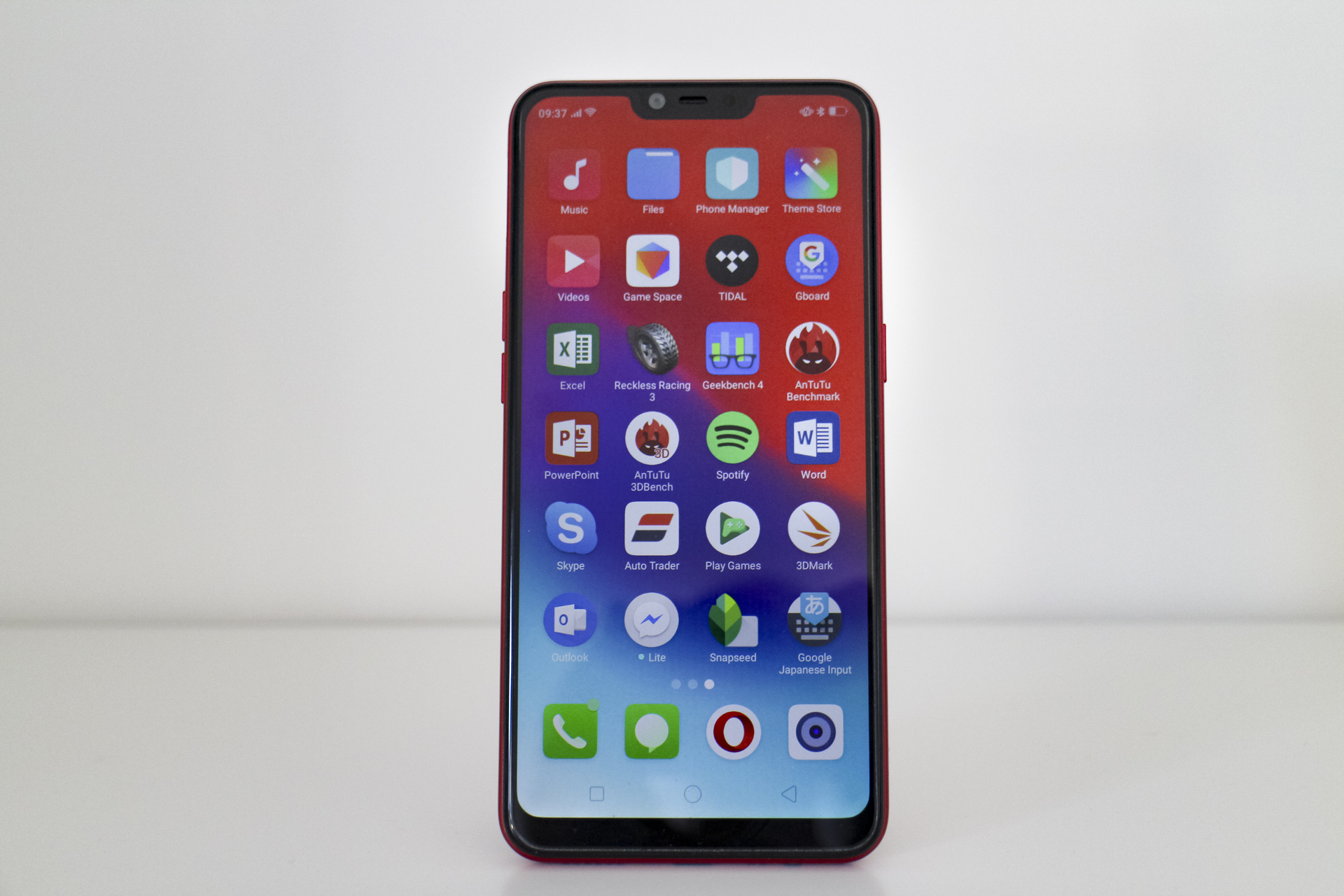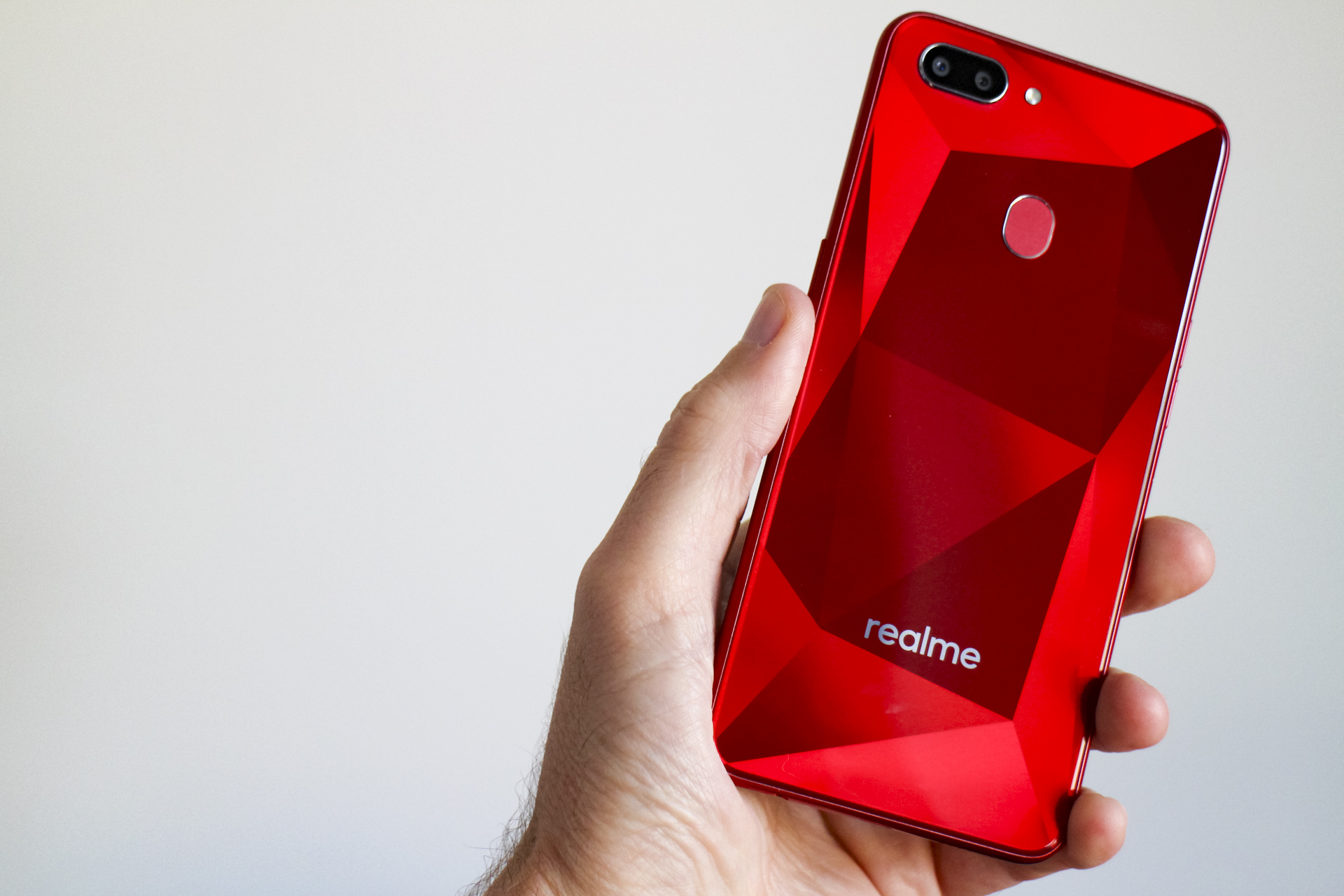Realme only became a proper, full smartphone brand on August 3, making it very, very young. Even OnePlus has been around since 2014, and we still consider it a “new” brand on the block. There’s a reason we bring up OnePlus: It’s because Realme shares similar origins with the prolific manufacturer. Its founder comes from Oppo, the same as OnePlus’ founder, and Realme also makes use of Oppo’s tech to keep prices reasonable.
This lineage grabbed our interest, so we jumped at the chance to try out the firm’s second phone — that’s right, it has already released two devices — the Realme 2. Can it compete with the many decent mid-price level phones out there at the moment, from OnePlus itself, Honor, Xiaomi, and even Samsung? We’ve given it a few days to win us over.
Design and battery
Let’s talk about the design first. We love the colourful, crazy light-reflecting rear panel, which takes us back to how awesome the HTC Touch Diamond looked when it came out in 2008. It’s made of polycarbonate, and there is a handy silicone case included in the box to keep it looking fresh. The metal chassis has been cleverly designed to hide the 8.2mm thickness, as the Gorilla Glass 3 over the screen sits proud off the curved sides, making it feel slimmer in the hand than it actually is. The edges of the glass are a little sharp though, and you feel them under the thumb more than we like.
It’s solidly built, doesn’t creak or groan, and at 168 grams it has a pleasing in-hand weight. Take a tour around the edges and you’ll find a 3.5mm headphone jack, and sadly a Micro-USB charging port for the absolutely massive 4,230mAh battery. This is one of the main plus points of the Realme 2: The battery lasts for days. We’ve used the phone for three days now, with varying levels of involvement, and it only now needs a recharge. That’s impressive, and regular normal use should see the phone last two days on a single charge.
The 6.2-inch LCD screen has a notch at the top, a chin at the bottom, and some bezels at the sides too, and the resolution is a disappointing 1520 x 720 pixels. However, the Realme 2’s screen-to-body ratio is still a decent 88 percent, with a 19:9 aspect ratio. How does it look? It’s good, but not great. The main issue being it doesn’t get very bright, and although it’s fine indoors and on gloomy days, in sunlight it’s not as visible as we’d like. Watching YouTube videos is a pleasant experience, but you don’t get the high definition experience you would with a OnePlus 6, or an Honor 10.
Performance and software
It’s a similar story with performance. A Qualcomm Snapdragon 450 powers the Realme 2 with a choice of either 3GB or 4GB of
The software problems were so annoying, we wondered if the device was running out-of-date or pre-production software.
Except, now we come to the Realme 2’s big problem: Software. It runs Android 8.1 Oreo (Google released Android 9 Pie last month) with Oppo’s ColorOS over the top. We aren’t particular fans of ColorOS when it’s run on serious hardware like the Find X, and it’s worse on a slower phone. There are pauses when opening apps, and many run slower than we’d like, especially data-hungry apps like Google Maps.
However, by far the worst, and most unusual issue, was the way the phone would randomly open apps. Without any prompting, the phone will start up the Clock app and switch to the Alarm tab, or try to open the Oppo Theme Store app. We reset the phone, but the problem persisted, and it often happens over and over again. The Realme 2 was lucky not to be thrown across the room. Both these actions also keep the screen on and waste battery, which is annoying when the phone is hidden in a bag.
Camera
Turning attention to the camera, the Realme has a dual-lens array on the back with a 13-megapixel main camera and a 2-megapixel secondary lens. The aperture is f/2.2 for the main lens, and it has autofocus. The photos are average, but lack color and visual pop, and suffer from low dynamic range. We did enjoy playing around the various live filters.+

The portrait mode is basic, and for the most part, pretty bad. It doesn’t like anything other than bright conditions, is slow to focus, and often refuses to add a bokeh effect at all. However, it’s not as bad as the selfie camera, which is terrible to the point of being unusable. Bright light confuses it, it can’t see in low light, and the beauty mode seems permanently switched to “pasty.”
The software problems were so annoying, we wondered if the device was running out of date, or using pre-production software. A check of the built-in software updater revealed it was completely up to date. Luckily, software problems are fixable, and seeing as Oppo’s might is behind it, we’d expect to see improvements very soon.
We contacted Realme on the situation, and were told the Realme 2 we are using is an early model, and that a software update will come to improve the photography experience, network compatibility, system stability, and ‘automatic tap,’ which we assume is the random app opening problem we’re having. Realme also said this has all been improved for the version on sale. This is great news, however, we can only review the device we’re given, and our enthusiasm has definitely been dampened by the software.
Based on our time with the Realme 2, it’s not worth the gamble until the software is fixed
Back on the positive side, the stadium-shaped rear fingerprint sensor is fast, and the face unlock system is effective, if not quite as fast as others we’ve used.
Early days
Should you buy one? Let’s address the price first. Realme has global ambitions but at the moment the Realme 2 is for sale in India, where it’s the local equivalent of $155. That’s not just cheap, it’s ridiculously cheap for the quality of the device itself, and considerably less than the competing Xiaomi Mi A2 and Pocophone F1.
However, based on our time with the Realme 2, it’s not worth the gamble until the software is fixed. The hardware is great, the battery life is excellent, and we like the colorful design, but the software bugs ruin the ownership experience. The camera is also poor quality, especially for selfies. Once we try out a version with the software update, we’ll revise our comments, should things change for the better. For now, we’d choose the Mi A2 or Pocophone F1 every time.
The OnePlus One had more than its fair share of problems, which the company strived to overcome and now produces some incredible, desirable devices. Realme has another phone coming very soon, the Realme 2 Pro, so it’s not slowing down, and we hope it improves over the standard version. Realme is one to watch, but for now, not one to buy.
